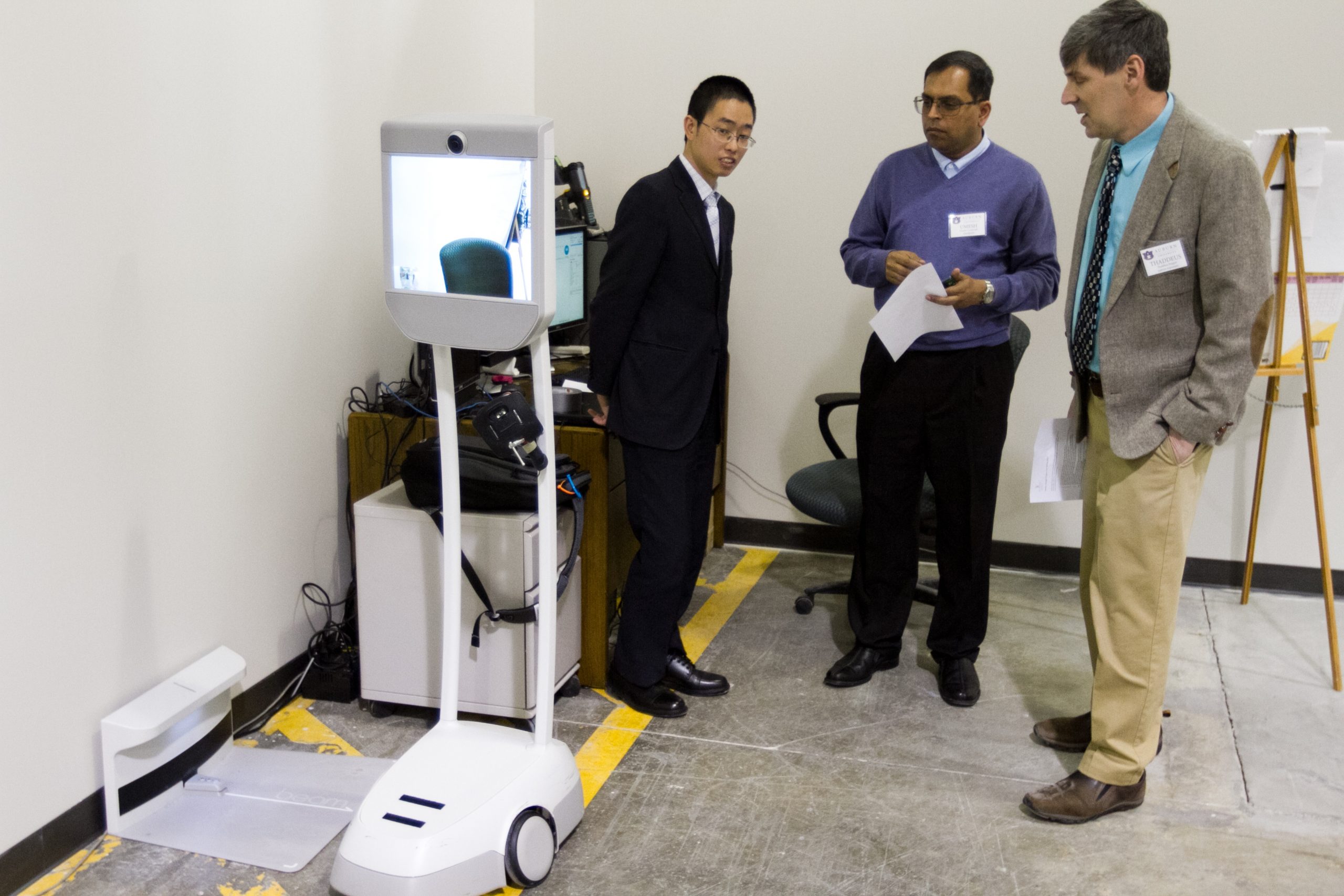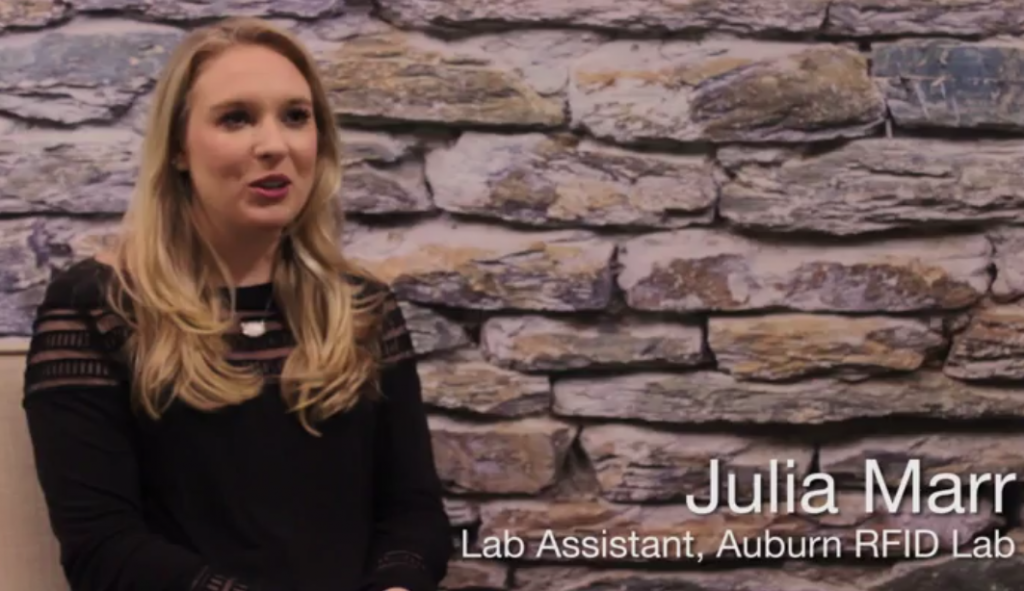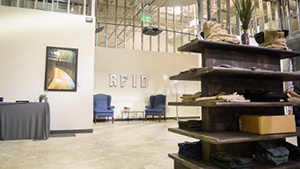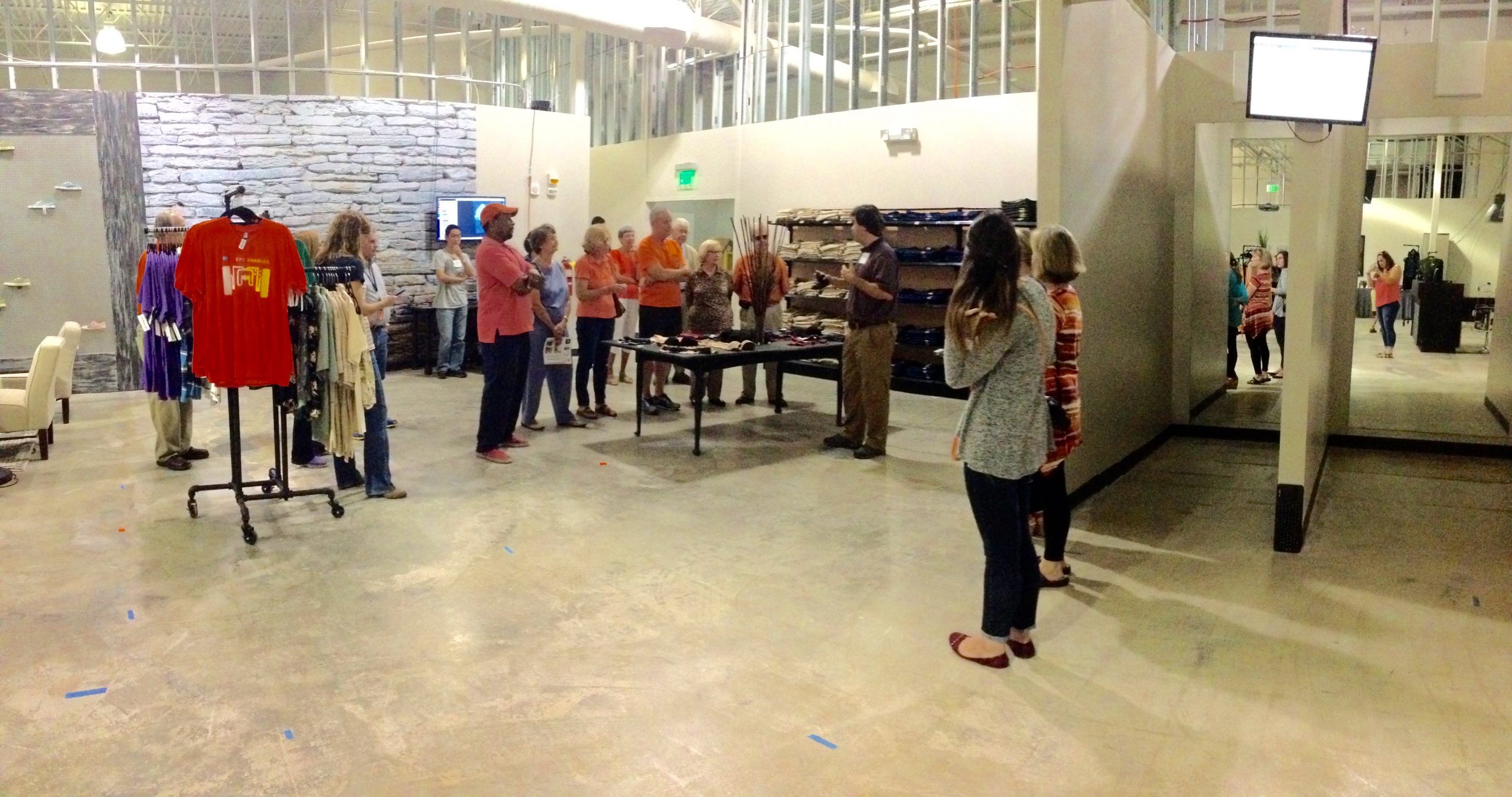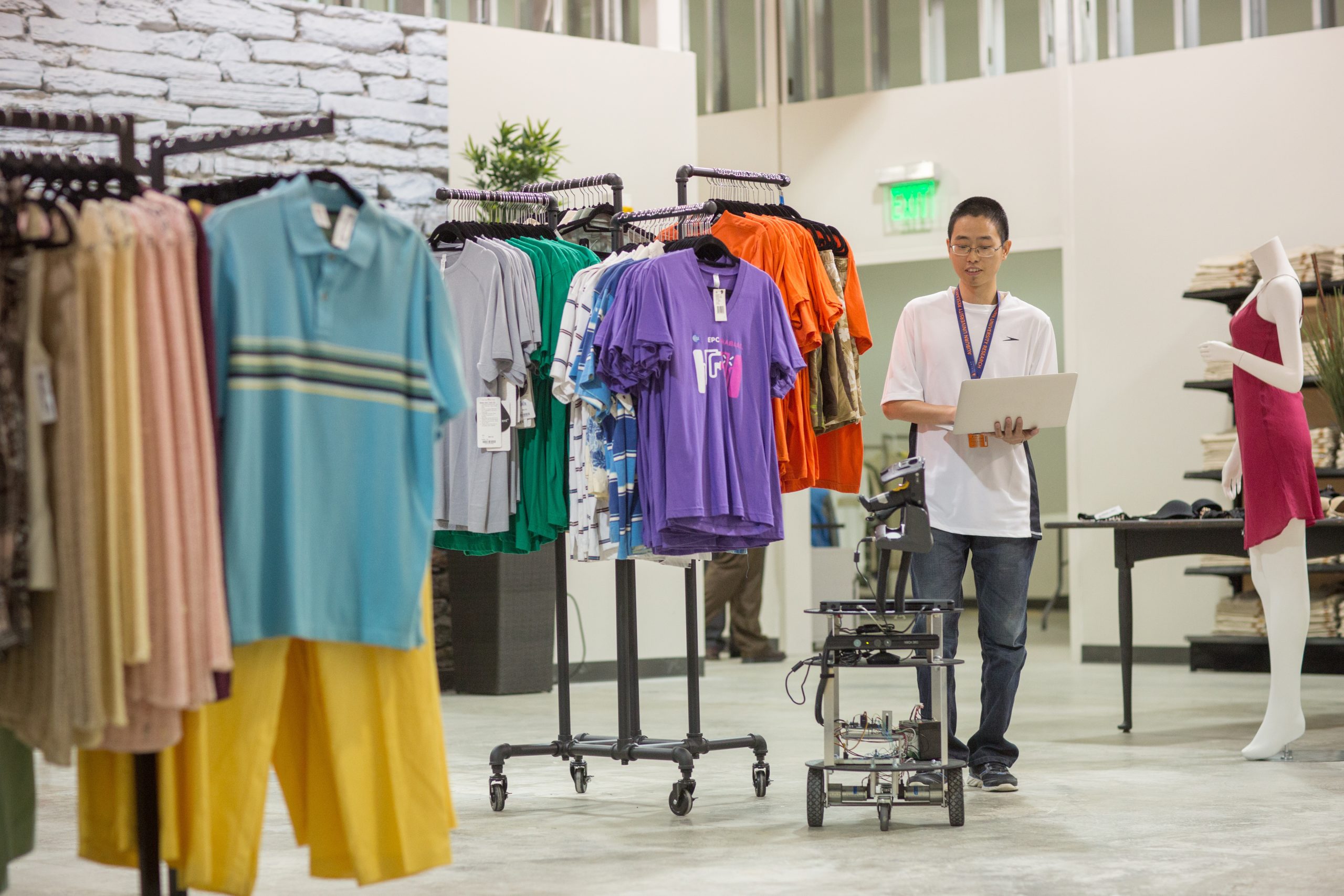
Dr. Jian Zhang is now the first ever RFID Lab Post-Doctoral Researcher! Dr. Zhang was also the first student from the Auburn University RFID Lab to earn a doctoral degree. He received the honor in December with a focus on Electrical Engineering. At the RFID Lab, he leads a team that concentrates on robotics and the blending of different technologies to create new ways to improve daily living and retail manufacturing.
Dr. Zhang and his team are opening an entirely new avenue at the RFID Lab by focusing on public grant research. The RFID Lab has never before pursued federal grant funding, but this new team is specifically designed to partner with faculty to apply for and execute research grants focusing on automatic identification technologies with NSF, NIH, and various other agencies. The new program has been very successful; in a few short weeks the program has already generated one full grant application, with several more to come!
His first project, and one that he still works on daily, is the robot featured in the image above: Jianny 5. Jianny 5 has the brains of a Dell laptop and eyes of an Xbox camera. It also has RFID readers attached so it can auto-scan RFID tags in the mock retial store to gather data.
Dr. Zhang has also continued to update the robot’s infastructure to allow for more precise movement control around the retail store.
Additionally, Dr. Zhang is working on a research project which combines the technology used to build Jianny 5 and the technology from a drone scanner also used for inventory purposes. The drone would have an RFID reader attached allowing it to easily fly over a room and scan all the tags within, eliminating the need for a robot to roll around the room. To continue his research in this developing technology, Dr. Zhang is applying for another research grant.
During our previous interview, Dr. Zhang was asked a simple question: If he could speak directly to those looking at his proposal or to those interested in funding his research, what would he tell them?
“I have the knowledge, the network, and the access to the RFID innovation technology, so with the grants we receive, we can make many new technologies that help with daily life.”
Interested in learning more about Dr. Zhang and his research projects? Want to help fund his latest project? Click below to contact the RFID Lab and start a dialogue today.

